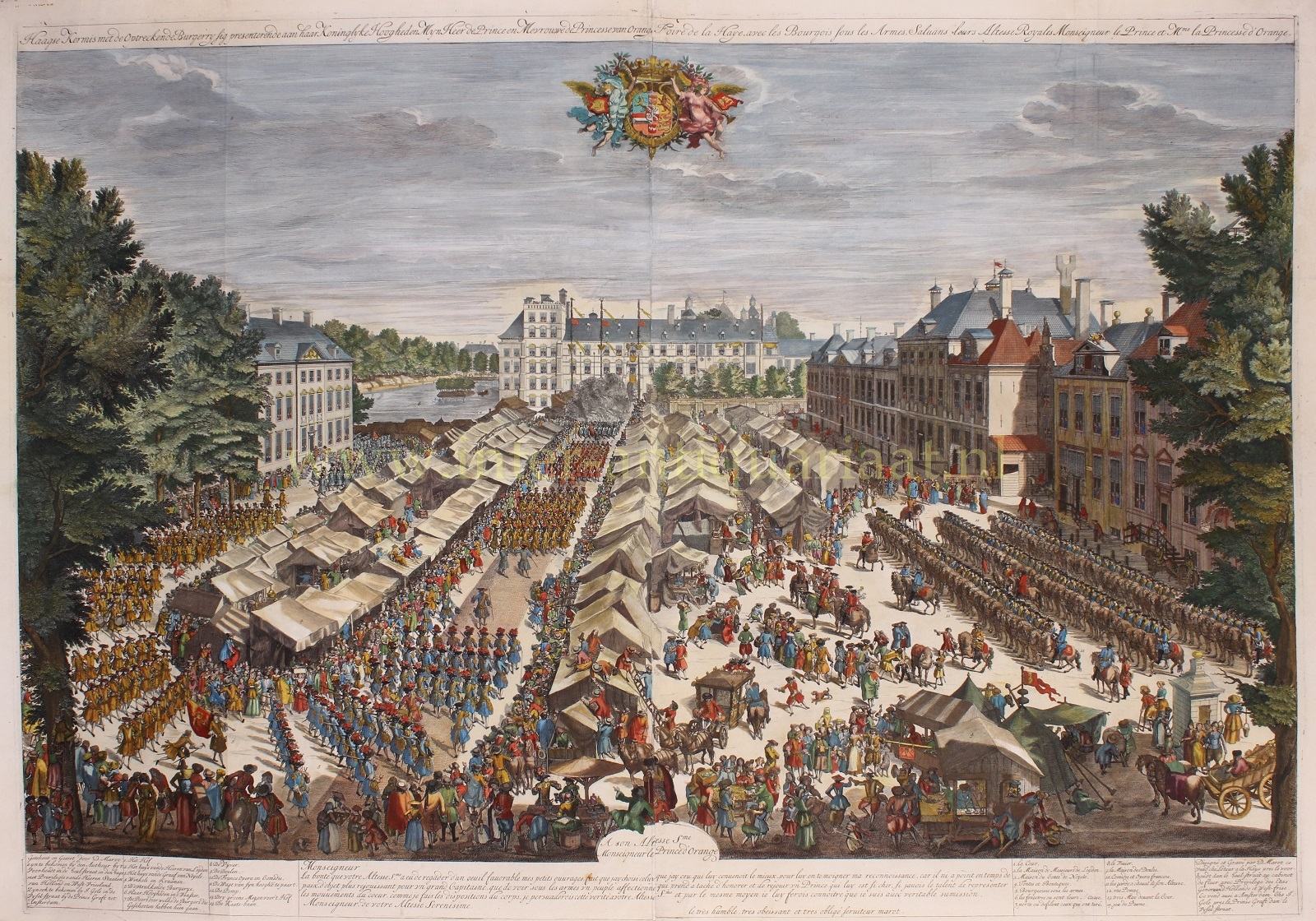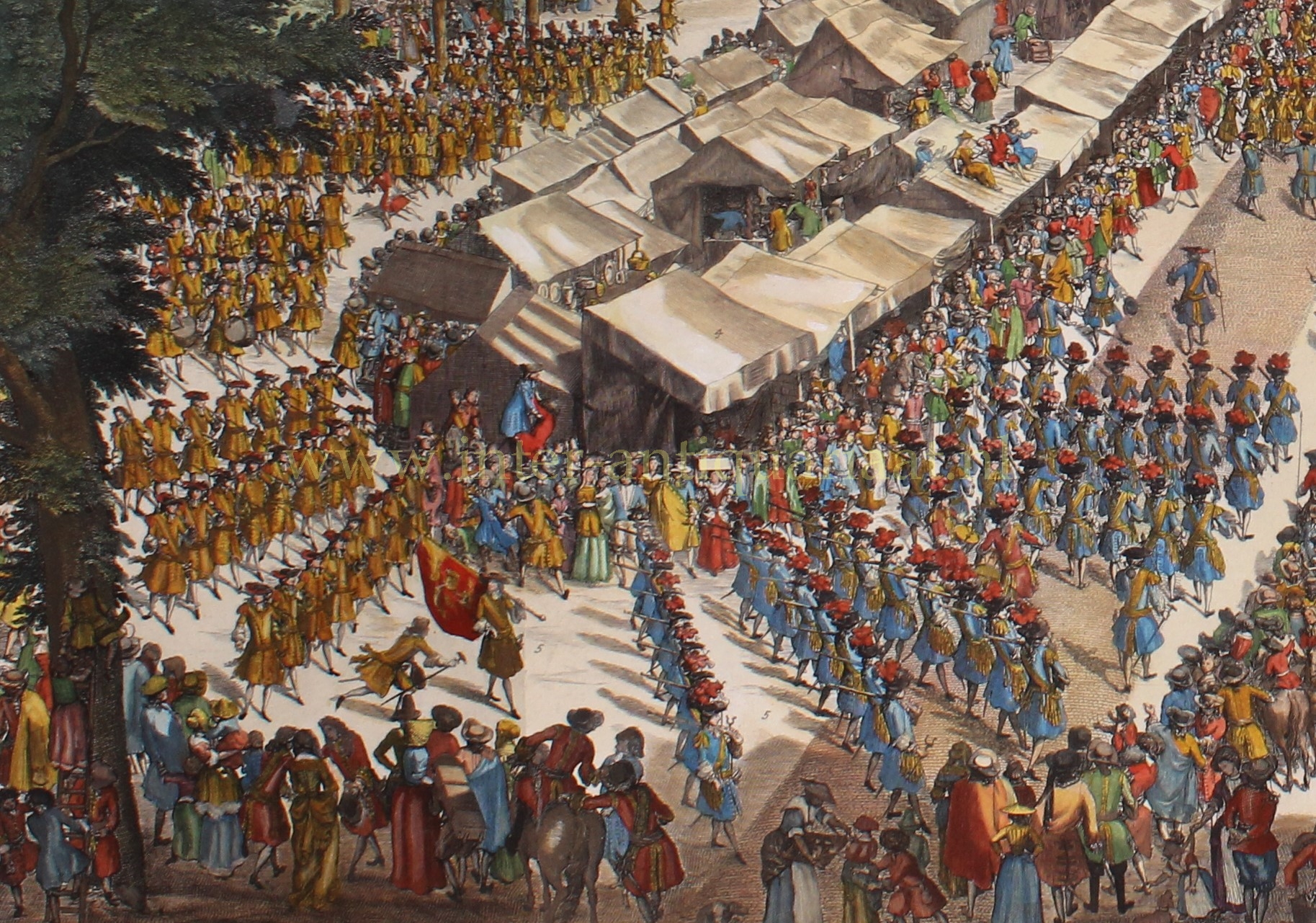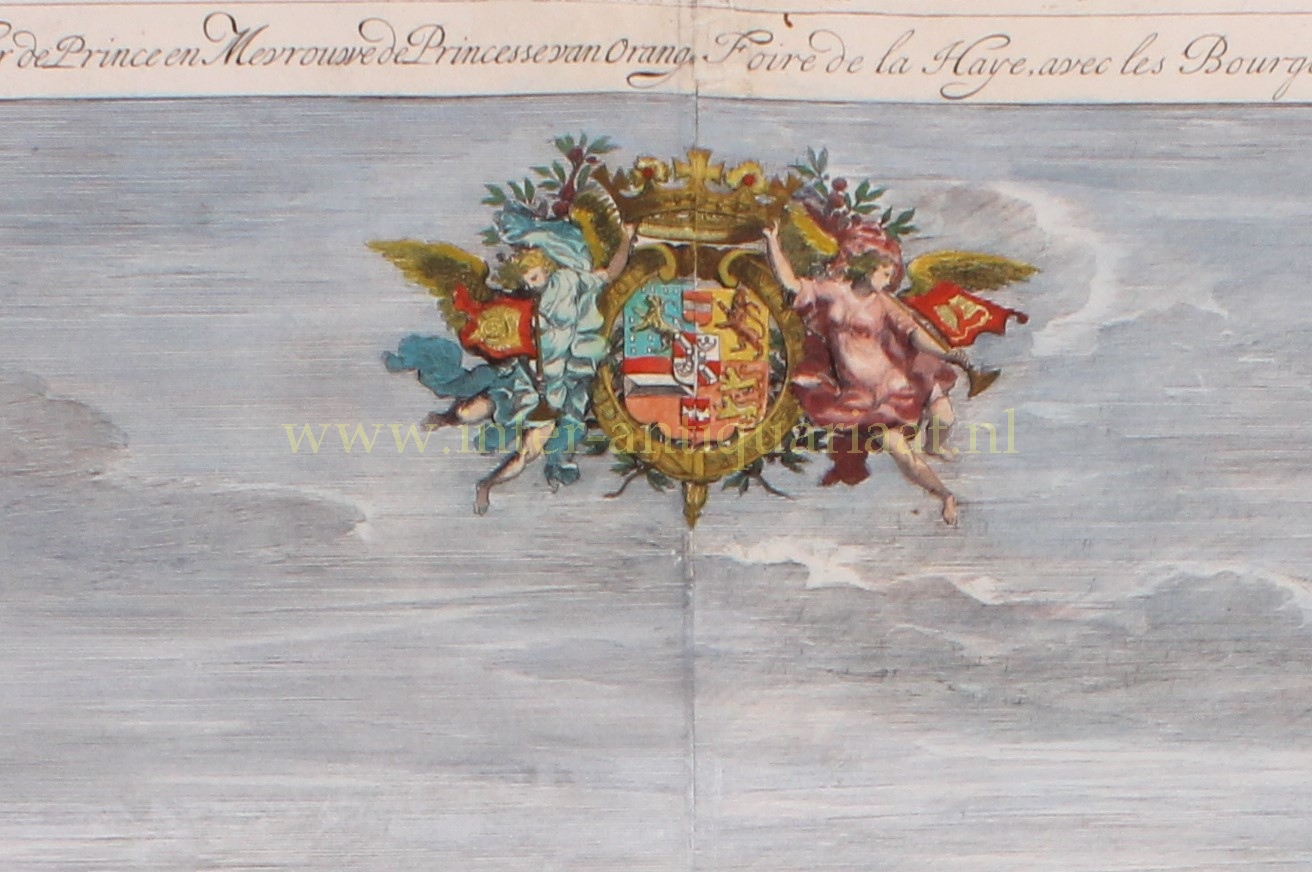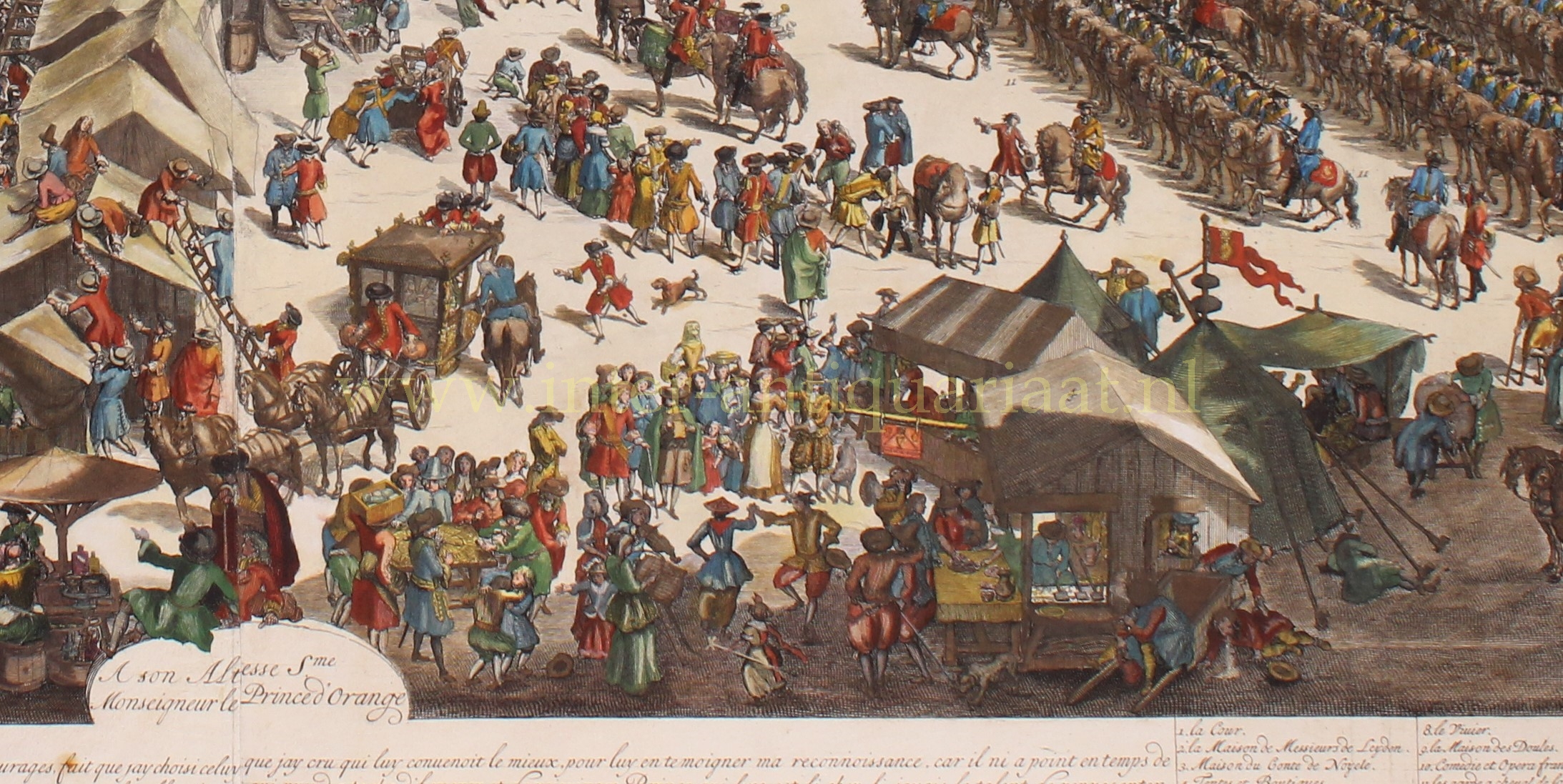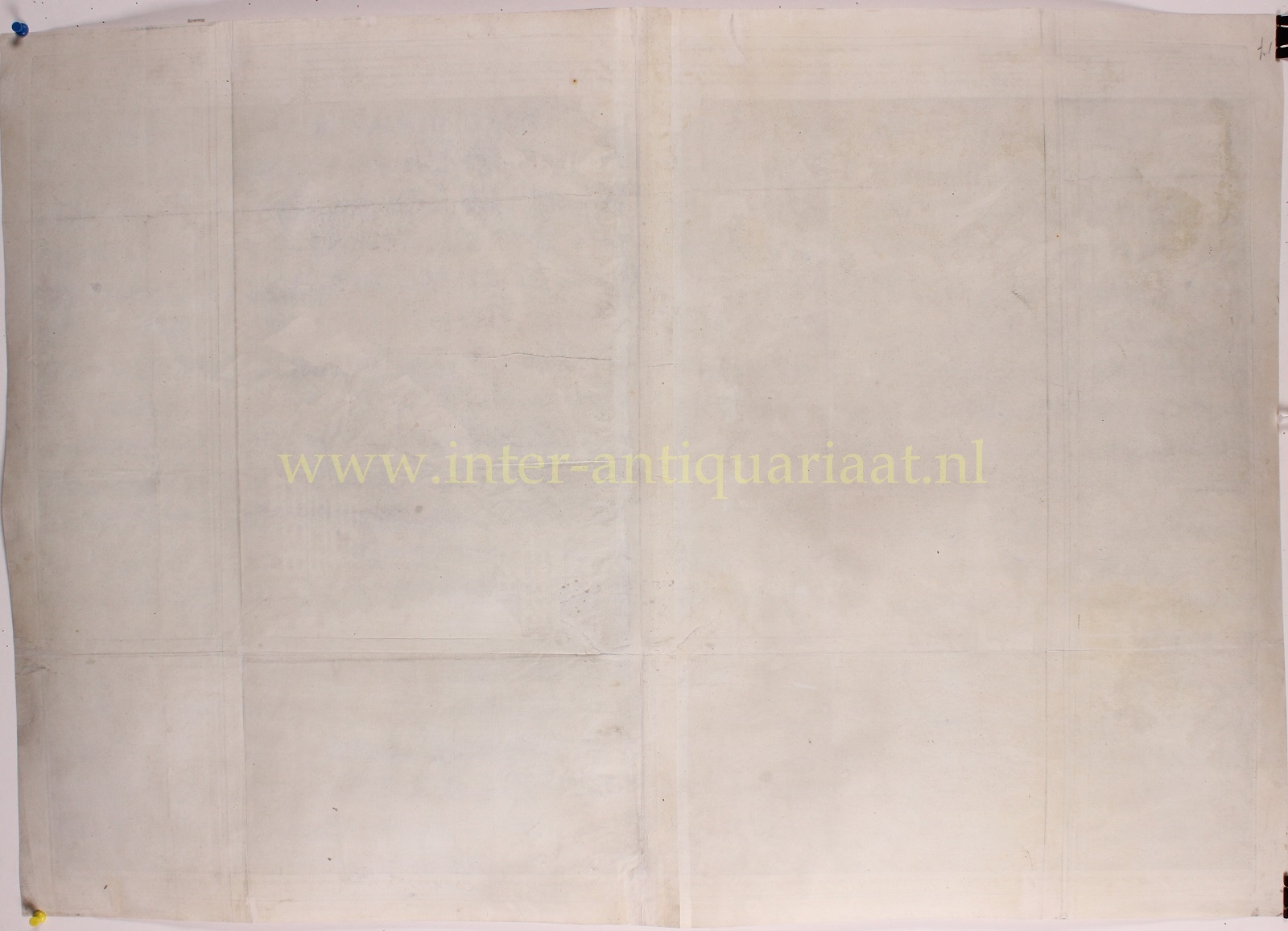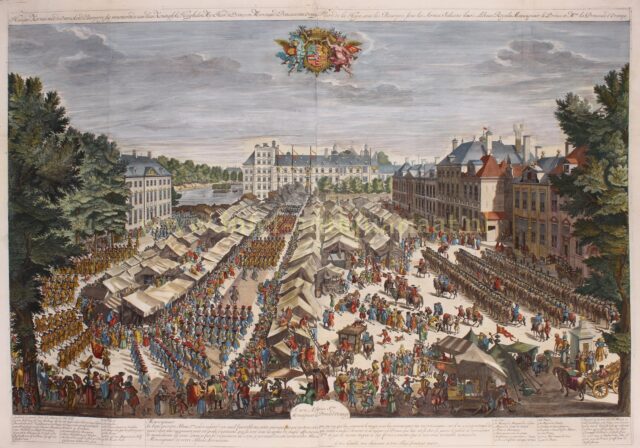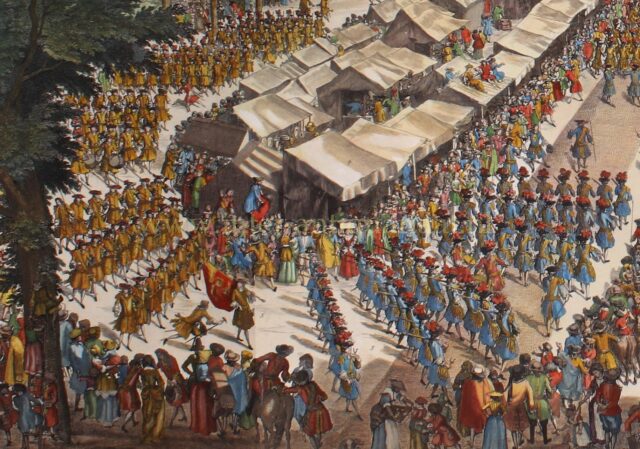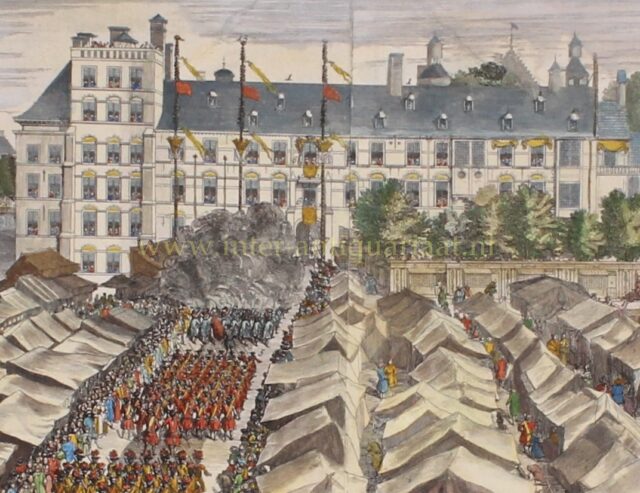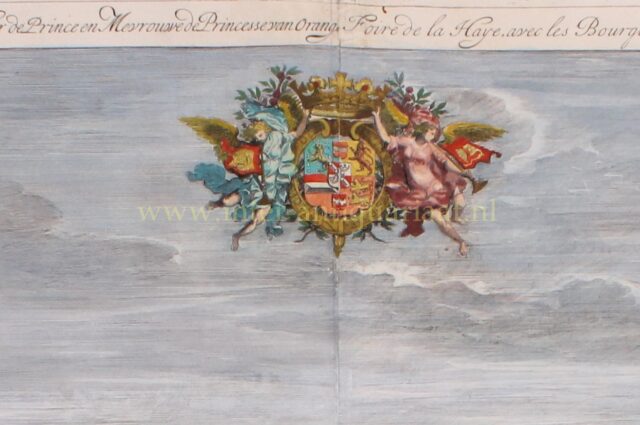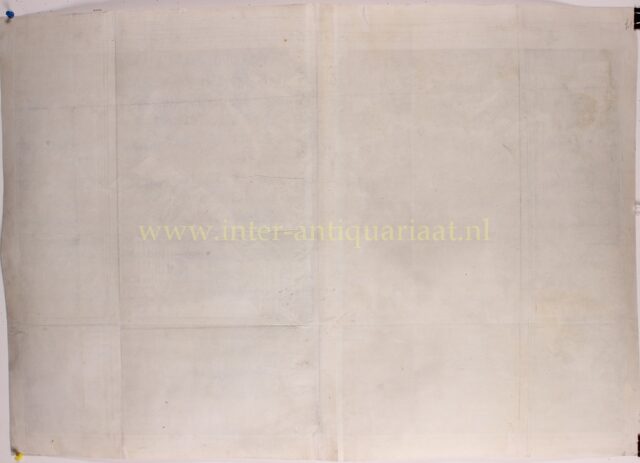The Hague, Buitenhof – Daniel Marot, 1686
FAIR IN THE HAGUE WITH THE CIVIC GUARD ON THE BUITENHOF “Haagse Kermis met de optreckende Burgerij, sig Presenterende aan…
Read more€5.250
FAIR IN THE HAGUE WITH THE CIVIC GUARD ON THE BUITENHOF
“Haagse Kermis met de optreckende Burgerij, sig Presenterende aan haar Koninklijke Hoogheden Mijn Heer de Prince en Mevrouw de Princesse van Orange“. Etching with engraving made in 1686 by Daniël Marot in The Hague. Coloured by a later hand. Size: 64.5 x 92 cm.
Beautiful bird’s-eye view of the Buitenhof in The Hague with the stadtholder‘s residence (Dutch: Stadhouderlijk Kwartier, nowadays housing the States General, the Ministry of General Affairs and the office of the Prime Minister) next to the Hofvijver in the background. On the left there is the Noyelleshuis (nowadays ‘Vijverhof’).
The Buitenhof is full of stalls between which numerous people are moving around. In the front on the right, there is a lot of activity at the stalls, where waffles are baked, among other things. Music is being made and there is dancing. But there is also a fight going on and someone is sleeping off his hangover, someone is vomiting and at the same time is being robbed of his purse.
The fair had grown into one big center of entertainment, with performances by tightrope walkers, acrobats and trained animals, which not only attracted the interest of the common people, also wealthy The Hague residents enjoyed it. The print shows us the moment when a parade of the city’s militia (Dutch: Schutterij) takes place. The gunmen come up from the left and march between the stalls to the stadtholder’s residence, to present their weapons. Stadtholder William and his retinue watch the parade from the window above the gate to the Binnenhof. William’s cavalry is positioned on the right, near the water pump. Behind the cavalry is the entrance to the chic The Hague “kaatsbaan” (a type of handball court).
In the seventeenth century, once a year, the civic guard presented their weapons. Fully equipped with banners and drums they marched to the Buitenhof. In 1697 this practice is abolished. When William III had become King of England in 1689. Being in London he sighed that “he wished to be a bird, so that he could fly across the North Sea to The Hague” and be present at the fair. He added that he would be willing to “pay a hundred thousand, yes, two hundred thousand guilders” for this.
The print (obvioiusly) is dedicated to Stadtholder William III, whose coat of arms is depicted at the top.
Literature:
- Frederik Muller – Nederlandse Historieplaten (1863-70), nr. 2683 (“rare and beautiful plate”)
- Charles Dumas – Haagse Stadsgezichten 1550-1800 (1991), p. 588, note 27
- J.F. Heijbroek – Geschiedenis in Beeld 1550-2000 (2000), p. 162-163.
Price: Euro 5.250,-

